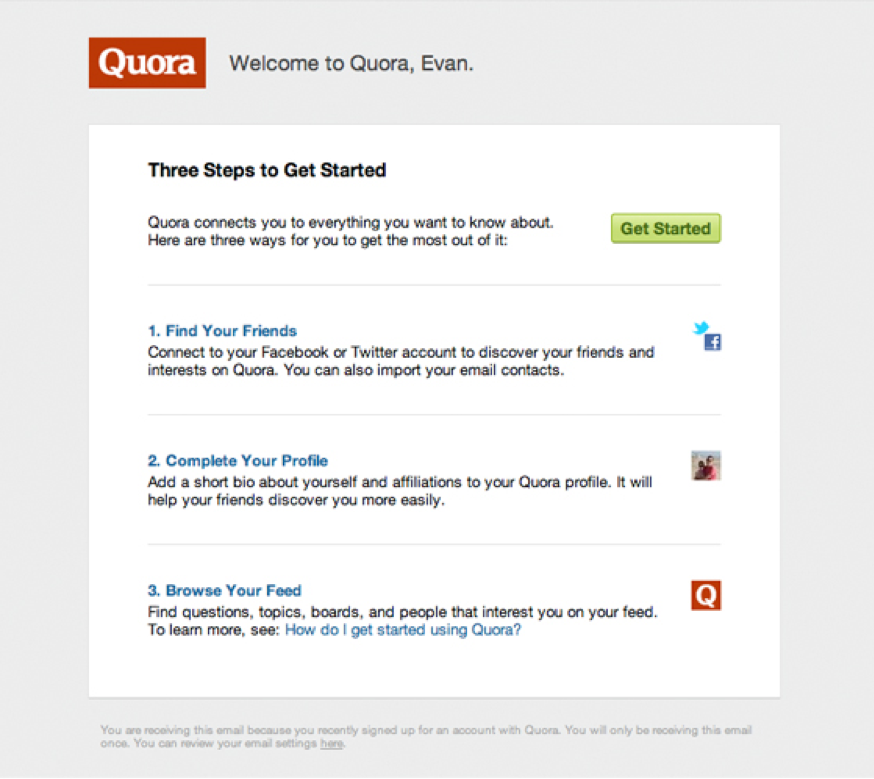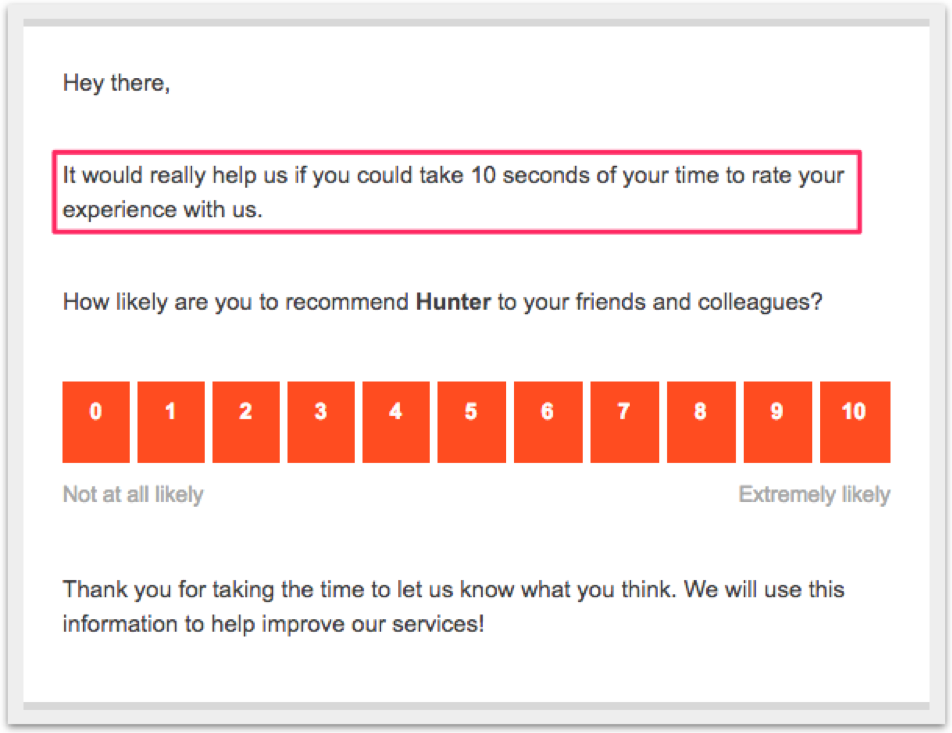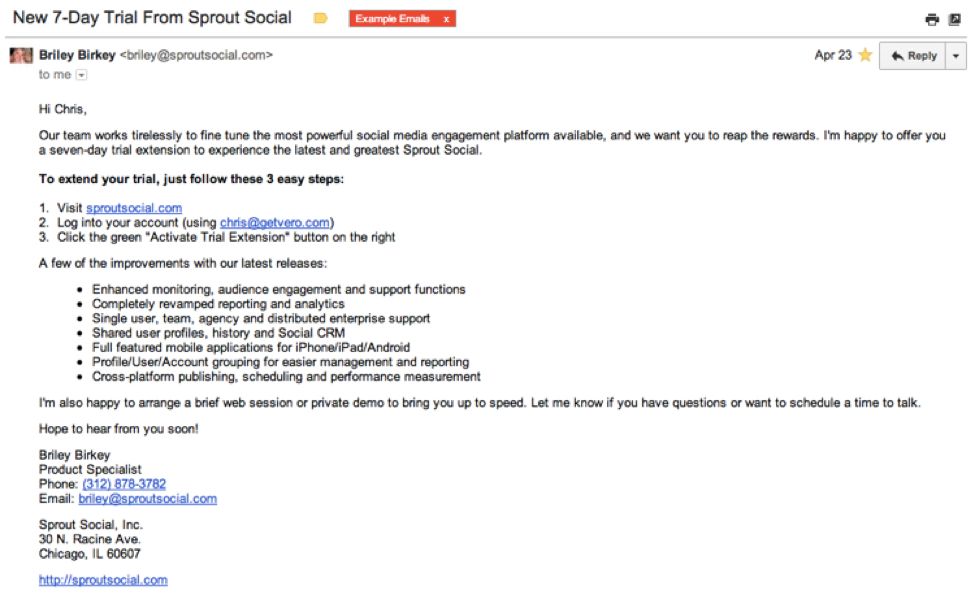When it comes to digital marketing, email is still king. In fact, studies have shown that every $1 spent on email marketing generates a whopping $38 in ROI – no other online or offline channel even comes close.
And for subscription companies, the importance of email marketing is even more pronounced. Ongoing customer relationships need to be nurtured over time, and email is an especially effective way of doing so. Sending the right emails can help build trust with your customers, allowing companies to reduce churn and grow upsells in a cost-effective way.
In this article, we’ll take a look at 5 essential marketing emails every subscription company needs to have in its repertoire.
Onboarding is critical for retaining customers in any subscription market. According to Arkenea, 25% of subscribers are lost shortly after sign up due to lack of engagement. Companies that want to avoid this outcome need to design an effective, streamlined onboarding system that engages customers from day one. And the most critical piece of that process is the very first email you send new subscribers – your welcome email.
The goal of your welcome email is to make it as easy as possible for new subscribers to start using your product or service. Quora’s welcome email is an excellent example:

Source: https://www.chargify.com/blog/wp-content/uploads/2016/01/quora-welcome-email.jpg
This email includes just three simple steps users can take to start participating in the Quora community, and provides multiple paths to completion. There’s a single “Get Started” button for users ready to begin the entire process, while users with an interest in one particular step can click through to the relevant page on their own. Finally, there is a link for users who wish to learn more about the site before following the recommended steps.
This simplicity and flexibility increases the chances of users successfully engaging with the service.
Buyer’s remorse has been a problem for marketers since the days of direct mail. Customers would order a product, receive it in the mail, then regret their purchase and send it back for a refund.
Over time, mail order companies developed a simple method to reduce such returns: they would include a letter in each package thanking the customer for their purchase, and reminding them of all the great reasons they decided to buy the product in the first place. This had the effect of making the customer a lot happier with their decision, thus increasing the chances that they would keep the product.
While this might seem like an outdated anecdote, it has great relevance to subscription companies in the digital age. Simply put, every monthly invoice is an opportunity for the subscriber to feel buyer’s remorse and cancel his subscription. That’s why the most successful subscription companies use their invoice emails as an opportunity to reinforce the value of their solution.
Zapier provides a great example of this:

Source: https://conversionxl.com/wp-content/uploads/2018/02/image12.png
By specifically describing the features offered in the Professional Plus plan, Zapier reduces the chances of subscribers downgrading their accounts, or even leaving altogether.
Expansion revenue is the lifeblood of any subscription business. Acquiring new customers can be very costly, so in order to stay afloat, subscription services must be able to grow revenue from their existing userbase faster than their customers churn.
This makes the upgrade email a very important part of any subscription marketer’s arsenal. These emails can be used to convert free users into paying customers, or to nudge existing members into a higher subscription tier. Either way, you’re trying to obtain a deeper level of ongoing investment from the recipient.
Grammarly shows how it’s done:

Source: https://reallygoodemails.com/wp-content/uploads/highlights-of-your-year-100-off-for-2017.png
This email is extremely effective because it provides users with specific metrics showing how much value they’ve already obtained from the software, then tells them exactly how much more value they can get by upgrading to a paid membership.
Obtaining regular feedback from your users is critical to ensuring that your solution continues to serve their needs effectively. Every now and again, you should send out an email asking for specific feedback from customers.
One of the most effective feedback survey methods is the Net Promoter Score (NPS). Conceived by Fred Reichheld of Bain & Company, NPS has been shown to account for up to 70% of the variation in revenue growth rates between competitors. On average, the NPS leader in a market grows more than twice as fast as competitors.
Just as importantly, NPS requires minimal time investment from your customers. It simply asks customers how likely they are to recommend the product to their friends and colleagues, on a scale of one to ten – so just a single click is required from the recipient.
Here’s an example from Hunter:

Source: https://conversionxl.com/wp-content/uploads/2018/02/image4.png
By quantifying the minimal time required, Hunter greatly increases response rates for this important survey, which allows them to keep close tabs on customer satisfaction.
Customers churn for many reasons, and not all of those reasons are permanent in nature. For instance, customers might decide to move on because you did not offer a specific feature at the time, or because they were not at the point where they could get much value out of your product.
For that reason, it pays to check back periodically with your lapsed customers to see if the situation has changed, and if it would make sense for them to sign up again.
The following email from Sprout Social does a great job of this:

Source: https://i0.wp.com/www.getvero.com/wp-content/uploads/2015/01/sprout-social-onboarding.jpg?w=750&ssl=1
There are a number of things this email gets right. First, it outlines the key features that have changed since the user left the service. This provides multiple “hooks” to intrigue the user into coming back and checking out the new upgrades. Second, the user can re-activate his trial account with just three simple steps. Third, the email does not look like a mass marketing email – it is friendly and personalized, and is signed off by a real human being.
By periodically sending out such re-activation emails, you’ll be able to win back a large number of users who would otherwise have signed on with a competitor.
If your email marketing sequence is missing any of these key pieces, you should seriously consider adding them to your campaigns. By refining these critical emails over time, you’ll be able to improve conversion, engagement and retention rates throughout the customer lifecycle.